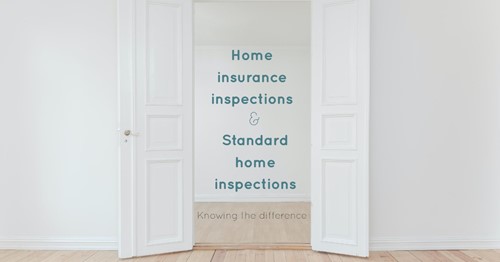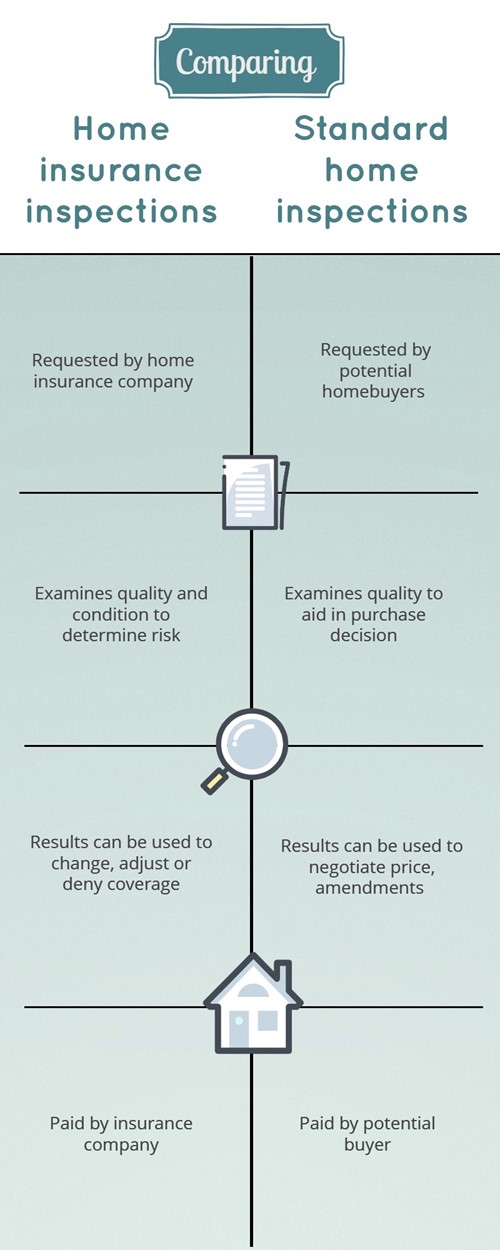
What’s the difference between a home insurance inspection and a standard home inspection? While homeowners might be familiar with the idea of home inspections in general, it’s crucial to know how an insurance inspection can differ.
Here is a basic guide comparing home insurance inspections and standard inspections:
Home insurance inspections are required and carried out by the insurance company providing the homeowners insurance policy. Standard inspections, by contrast, are required by mortgage lenders during the homebuying process.
Lenders might not require homeowners insurance inspections, but you do need proof of insurance for final mortgage approval.
Insurance companies use inspections to determine the amount of risk associated with the client’s home. The inspectors examine the property to find potential liability issues associated with its condition or features. They can also use the inspection results to create an accurate valuation of the home to determine the correct amount of insurance coverage to recommend.
Standard inspections are more broadly used, but are most often used to influence and educate a homebuying decision. A standard inspection reports on the quality and condition of the home in many of the same ways. However, these inspections are more concerned with informing the potential buyer of any maintenance issues they otherwise wouldn’t discover until after moving in.
Home insurance inspections are typically free to the homeowner. The insurance provider pays the bill for the inspection itself, but the overall cost may be wrapped into the policy itself.
In the homebuying process, the buyer pays for the home inspection. In some cases, the seller might offer to pay for the inspection as part of a negotiation.

Both of these types of home inspection are something every homeowner is likely to deal with over the life of the property. The more you know about the differences, the more confident you’ll be in discussing the options with your provider.
